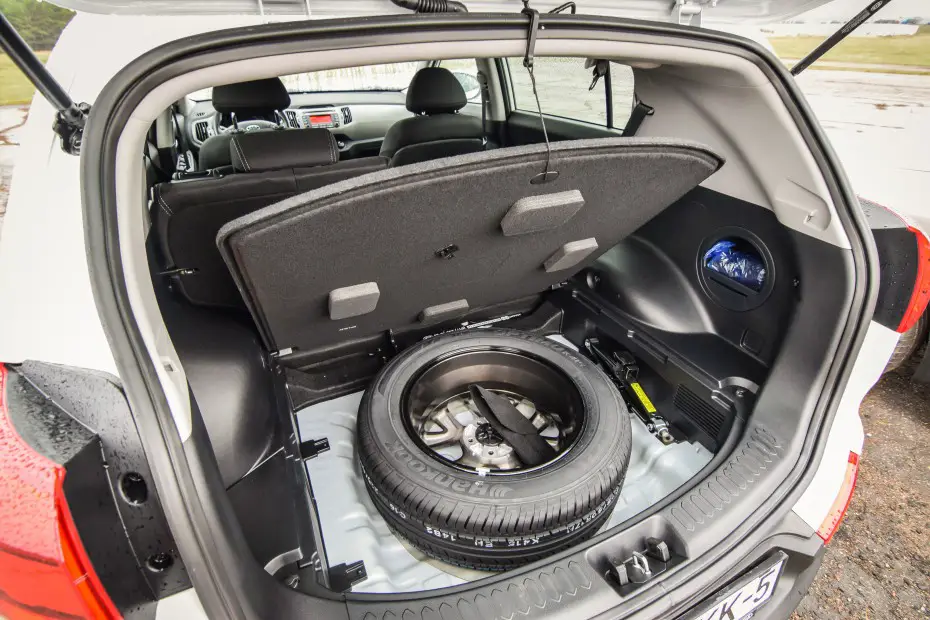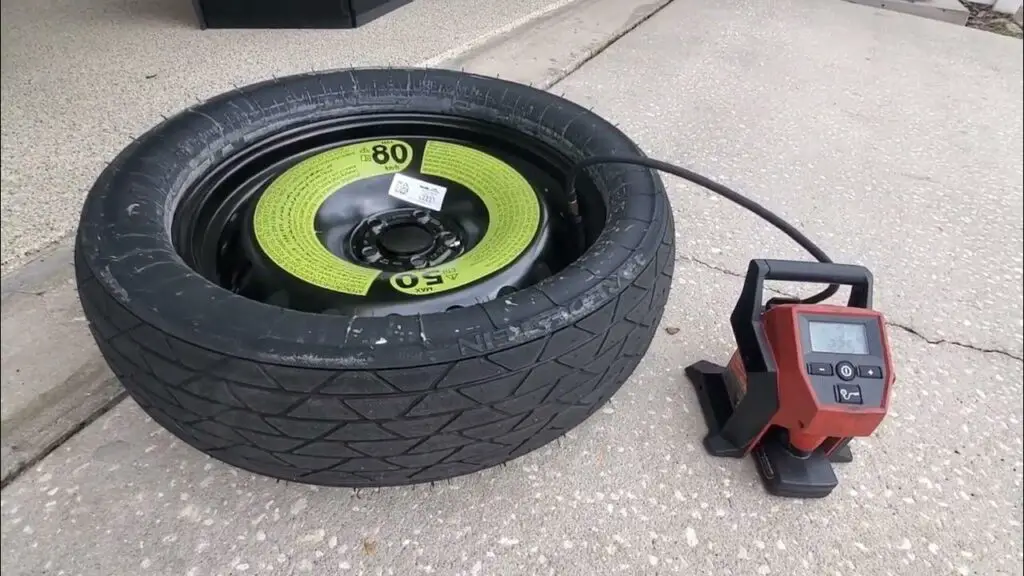Can you put air in a spare tire? Yes, you can and should put air in a spare tire to ensure it is ready for use in an emergency. Spare tires, especially compact or “donut” spares, require higher air pressure than regular tires, so it’s important to regularly check and maintain the correct PSI.
Spare tires are an important component of the vehicle’s emergency preparedness. Whether you are driving long distances or just around town, having a properly inflated spare tire can save you from being stuck in the middle of nowhere with a flat. However, many drivers forget to maintain the air pressure in their spare tires, leading to a potentially dangerous situation when a tire blowout occurs. Putting air in a spare tire may seem like a minor task, but it is one of the most important things you can do to ensure you’re ready for an emergency.
Many compact or “donut” spare tires require higher air pressure than regular tires to maintain their load-bearing capacity and ensure they work effectively. In this article, we will provide a detailed explanation on why spare tire inflation is so important, how often to check the air pressure, the proper air pressure for different types of spare tires, and how to properly inflate the spare tire.

Contents
Why Is It Important to Put Air in a Spare Tire?
Keeping the correct air pressure in the spare tire is essential for ensuring it performs properly when needed. In this section, we will explore the key reasons why maintaining proper air pressure in the spare tire is important for safety and vehicle performance.
1. Maintaining Proper PSI
A spare tire isn’t just a backup—it’s a tire that will need to perform in an emergency situation. Spare tires, especially “donut” spares, are designed to be smaller, lighter, and more compact than regular tires, which helps save space in the car. However, because they are smaller, they need to be inflated to a higher pressure to carry the weight of the vehicle. The ideal pressure for a spare tire is usually around 60-80 PSI (pounds per square inch), but this can vary depending on the vehicle’s specifications. Here are detail about Why Spare Tire 60 PSI?
Without the proper PSI, a spare tire might not be able to handle the stress of driving at speed. It may fail prematurely or even fail to work at all. This can lead to further damage to the vehicle or, worse, an accident if you need to rely on the spare tire in a critical moment. Regularly checking and putting air in the spare tire can ensure it is always ready when you need it.
2. Temperature Variations and Air Loss
Tire pressure naturally decreases over time, especially with changes in temperature. When it’s cold, air contracts, causing the tire pressure to drop. Conversely, heat can cause the air inside the tire to expand, increasing the PSI. Both temperature changes and natural leaks in the tire can reduce its air pressure, so it’s crucial to periodically check and ensure that the air pressure remains within the recommended range.
3. Safety and Reliability
In an emergency, you need the spare tire to work without a hitch. A tire that is underinflated may make driving unstable and increase the chance of further tire damage. For example, a low-pressure spare tire on the rear or front wheel could reduce the vehicle’s handling capabilities, making it harder to control the vehicle.
Additionally, underinflated spare tires could cause further issues with the vehicle’s suspension and alignment, leading to unnecessary wear on the other tires. If you have a spare tire that hasn’t been properly inflated, you might find yourself stuck with a non-functional tire in an already stressful situation.

How to Check and Inflate the Spare Tire
Checking and inflating the spare tire is a simple yet crucial task to ensure it’s ready for use in case of an emergency. In this section, we’ll walk you through the steps to properly check and inflate the spare tire, so you’re always prepared when you need it most.
1. Check the Manufacturer’s Specifications
Before inflating the spare tire, the first thing you should do is check the manufacturer’s recommendations. Most vehicles have a sticker inside the driver’s side door frame that indicates the correct air pressure for both the regular and spare tires. If this is not available, refer to the vehicle’s owner manual for the specifications.
2. How to Check the Air Pressure of the Spare Tire
It’s important to regularly check the air pressure of the spare tire to ensure it’s ready for use in emergencies. In this section, we’ll explain the steps to properly check the air pressure and make sure the spare tire is correctly inflated.
- Locate the Valve Stem: Find the valve stem on the spare tire. This is typically located on the sidewall of the tire and looks like a small rubber nozzle.
- Use a Tire Pressure Gauge: Remove the valve cap and press a tire pressure gauge onto the valve stem. A digital or mechanical gauge will give you the PSI reading. Check the reading to see if it matches the recommended pressure for the spare tire.
- Recheck the Tire Pressure: After checking, it’s important to recheck the pressure after you inflate the spare tire, ensuring that the correct PSI has been reached.
3. Inflating the Spare Tire
Inflating the spare tire correctly ensures that it will function properly when needed. In this section, we’ll guide you through the process of properly inflating the spare tire to the recommended pressure.
- Attach an Air Compressor: If the tire is low on air, use an air compressor to inflate it. You can find these at most gas stations or use a portable compressor that you keep in the vehicle.
- Inflate to the Correct PSI: Set the compressor to the recommended PSI for your spare tire, and begin inflating. Be sure to keep an eye on the pressure while inflating to avoid overinflation.
- Check Again: After you finish inflating, check the tire pressure again to confirm that it is at the correct PSI.
- Replace the Valve Cap: Don’t forget to put the valve cap back on to prevent dirt or debris from entering the valve stem.
Common Spare Tire Issues and How to Avoid Them
Spare tires, like any other part of the vehicle, can encounter issues if not maintained properly. In this section, we will discuss some common problems with spare tires and offer tips on how to avoid them to ensure your spare is always ready for use.
1. Leaks and Flat Spares
Spare tires, especially compact ones, can develop slow leaks over time, which is why it’s crucial to check their air pressure regularly. If you notice that the spare tire is flat or losing air, it may need to be replaced.
2. Overinflation
It’s essential to avoid overinflating your spare tire, as this can cause the tire to wear out prematurely. Overinflation can lead to increased pressure, which may damage the tire’s sidewalls or cause it to blow out. Always ensure that the PSI doesn’t exceed the recommended limits.
3. Using the Wrong Tire Type
In some vehicles, especially those with all-wheel drive (AWD) or four-wheel drive (4WD), using a donut spare tire that’s not the same size as the other tires can cause damage to the drivetrain. Make sure that the spare tire matches the vehicle’s needs.
Frequently Asked Questions
Here are some FAQs about putting air in spare tire –
1: How often should I check the air pressure in my spare tire?
It’s recommended to check the air pressure of the spare tire at least once a month, and more often if you’re preparing for a long trip.
2: What happens if I don’t put air in my spare tire?
If you don’t maintain the correct air pressure in the spare tire, it may not be usable in an emergency. This can lead to poor handling and other safety concerns if you have to use it.
3: Can I use a regular air compressor to inflate my spare tire?
Yes, you can use a regular air compressor to inflate your spare tire. Just make sure to adjust the PSI to the manufacturer’s recommended level.
4: What is the recommended PSI for a spare tire?
The recommended PSI for a spare tire is typically between 60 and 80 PSI, but always refer to the vehicle’s manual for specific recommendations.
5: Is it safe to drive with an underinflated spare tire?
No, driving with an underinflated spare tire is unsafe. It can lead to poor handling, increased tire wear, and even cause the tire to fail.
Conclusion
Maintaining the proper air pressure in the spare tire is just as important as keeping your regular tires properly inflated. A spare tire that’s not inflated to the correct PSI can leave you stranded in an emergency, and it may not perform as expected when you need it most.
By following the simple steps outlined in this guide, you can ensure that your spare tire is always ready for use, providing you with peace of mind and enhancing the overall driving safety. Don’t forget to check the spare tire’s air pressure regularly, especially before long trips or in extreme weather conditions. Proper tire maintenance isn’t just about the regular tires—it’s about being fully prepared for any situation that may arise.